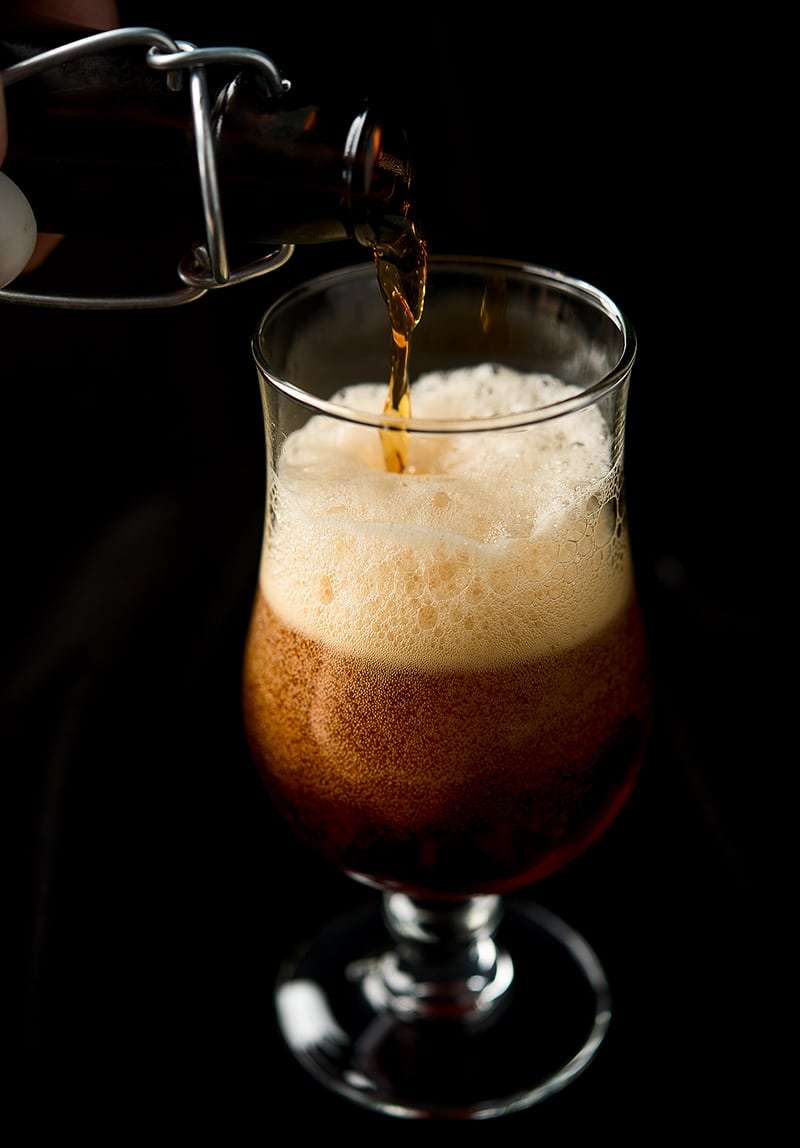
5.0 from 21 votes
Juniper Wild Ale
This is a red ale with moderate carbonation, a slight bit of tartness -- but not enough to make it a true sour -- and with strong aromas of juniper, with a backnote of pine. I am still primarily an extract brewer, but feel free to modify this to be an all-grain ale if you want to. One alternative in terms of malt is to use Munich instead of Maris Otter, which I did in the first incarnation of this beer. Note that the yeast on my juniper berries is slow and steady, so you should not need a blow-off tube.
Prep Time
1 hr
Cook Time
1 hr
Total Time
2 hrs
Servings: 3 gallons
Course:
Drinks
Cuisine:
American
Ingredients
- 3.15 pounds Maris Otter extract (56%)
- 1.25 pounds rye malt extract (22%)
- 1 pound dry light extract (17.7%)
- 4 ounces Special B malt (4.5%)
- 28 grams Fuggles hops, added at 60 minutes to go in the boil
- 1 Whirlfloc tablet, added at 10 minutes to go (helps clarify beer)
- 60 grams juniper berries, half added with 5 minutes to go, half added at knockout
- 58 grams chopped pine needles, added at knockout
- 1 quart juniper starter
- 1 ounce oak chips, boiled for 1 minute first
- 6 teaspoons 88% Lactic acid (optional)
Instructions
- Steep the Special B malt. Put the malt into a grain bag or tie it up loosely in cheesecloth and cover it with 3 quarts of water. Bring this to 155°F to 165°F over medium heat and hold it at this temperature for 1 hour. Remove the bag and set it over the pot in a strainer. Pour 2 quarts of water heated to 170°F over it to rinse the grain. Let the bag drain for 10 minutes, then remove. Discard the grain or feed it to animals.
- Start the boil. Add 2 more gallons of water to the pot and bring this to a boil. Add the hops and set the timer for 1 hour.
- With 30 minutes to go, add all the extracts and stir well.
- If you are using it, add the Whirlfloc to the boil along with the wort chiller, if you have one. This will sanitize the chiller.
- With 5 minutes to go, add half the juniper berries.
- Knockout. Turn off the heat and add the final addition of juniper berries along with the chopped pine needles.
- Crash chill the wort. Use your wort chiller to chill the wort back to 75°F or cooler, depending on how warm your tap water is. Or, put the pot in a cooler with lots of ice water in it. Use a clean spoon to create a whirlpool in the wort, which will help it chill faster. Hopefully you will see gnarly bits in the wort that look like egg drop soup, or separating miso in soup: That's cold crash trub, and seeing it means you will have a clearer beer.
- Move the wort to the fermentor. Add the juniper yeast starter to the fermentor; I use a glass carboy. Pour the contents of the pot through a sanitized strainer into the fermentor. If the strainer gets all gunked up with trub, remove it before continuing. Put a sanitized airlock on the fermentor and put the beer in a place where it can ferment cool, ideally 66°F to 69°F. Leave it there for 2 weeks.
- Add the boiled oak chips to a new sanitized carboy and rack the beer into it. I do this only if there is a lot of crud in the fermentor. If it's OK, I just add the oak chips to the primary fermentor. Either way, let the beer finish fermenting for 10 more days.
- Bottle or keg the beer. If you are bottling, you want to add enough priming sugar to the batch to get about 2 volumes of CO2, about 1.8 ounces or 51 grams for 3 gallons. Add the lactic acid to the bottling bucket. Bottle condition the ale 2 weeks before opening the first bottle. This beer ages well.
Cup of Yum